A Guide to the Human Digestive System
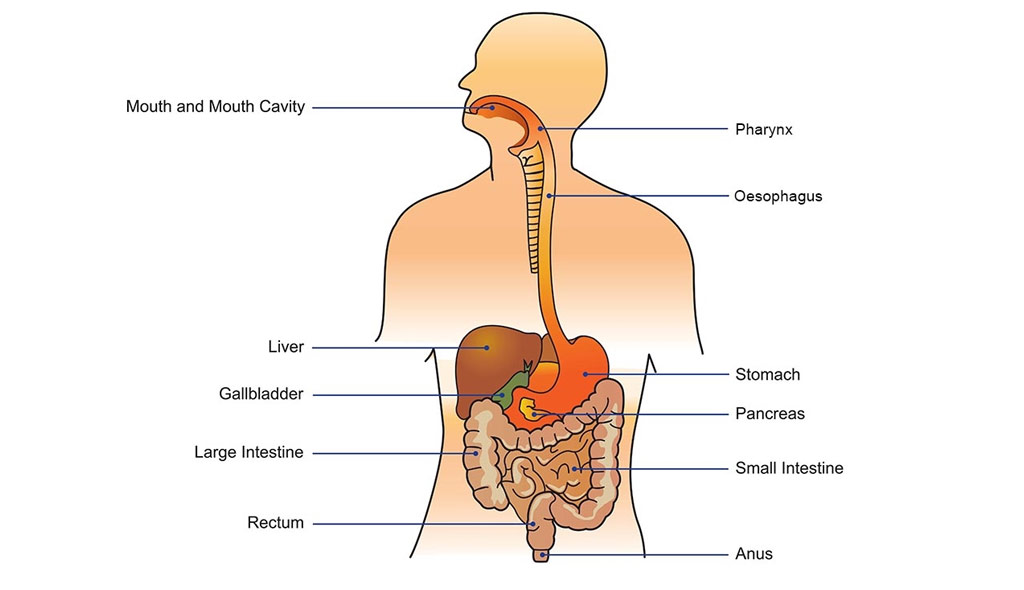
The human digestive system is one of the most integral systems of our body that helps in breaking down the food we eat into nutrients for growth, production of energy, and cell repair. It comprises of a complex, yet smooth coordination between several organs. To help you get a clear and sequential summary of the human digestive system, we can breakdown everything associated with it. So, let’s get started.
What is Human Digestive System?
Evident by its name, the human digestive system facilitates the process of digestion. In this process, the large chunks of foods we consume are broken into smaller components so that they can be easily absorbed and assimilated into the body. To further understand the importance of the digestive system, let’s take a look at some of its functions.
The Function of the Human Digestive System
The human digestive system helps us in the following ways:
- First of all, it is responsible for producing gastric secretions in response to the smell and sight of food. This generates interest in us to ingest the food.
- The digestive system of the human body also helps the food to travel through the body through a series of relaxations and contractions of internal muscles.
- It helps in physically breaking down the food which prompts the mechanical digestion. Here, the large pieces of food are broken into small pieces.
- The digestive system produces important enzymes that help in chemically breaking down the food. Here, the small pieces of food are broken into simple molecules.
- It helps in the absorption of the molecules into the body. This aids in the production of energy and repair of cells.
Now, you must be curious as to how does the digestive system carry out such complex functions. Well, it does so with the help of the various organs involved in the process. This brings us to the next section of the article – the different parts of the human digestive system.
Parts of the Human Digestive System
We are going to explain the digestive system of the human body in a sequential manner, starting from the organ that first deals with the food to the one that deals at last.
Mouth
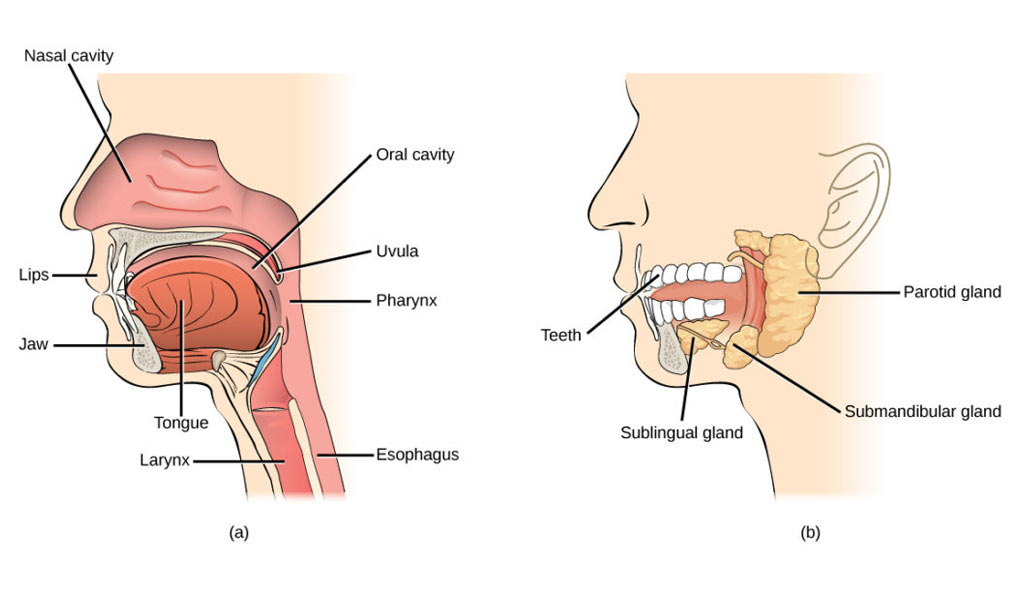
This is the first portion of the upper gastrointestinal tract and it is responsible for both receiving the food items as well as producing saliva.
As soon as you take the first bite of your food, your body starts the digestion process. So, as you see, your digestion process begins much before the food enters your stomach. When you chew your food, it is broken down into smaller parts that help in easy digestion. This is why it is always advised to properly chew your food and eat slowly.
The smell and sight of food trigger your salivary glands to secrete saliva, which plays a vital role in further breaking down the food particles in a form that allows your body to easily absorb it.
Esophagus
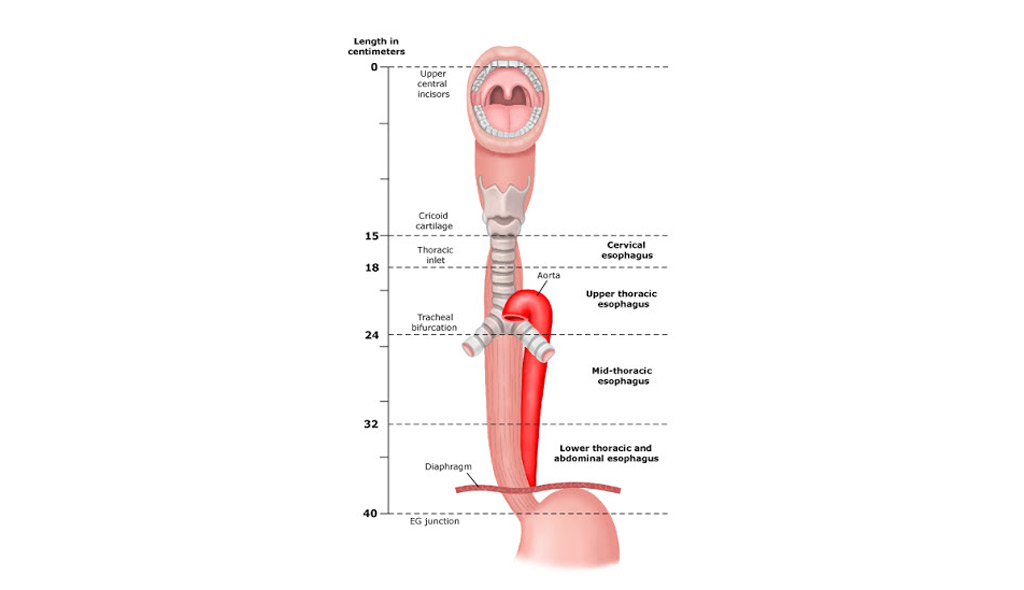
Next up is the esophagus. When you swallow your food, the muscles present in your mouth and throat push it to your upper esophagus. It is situated near your windpipe (trachea). This is the tube that connects your throat to your stomach.
The esophagus uses a series of muscular contractions and relaxations known as peristalsis to deliver the food particles to the next organ in action – your stomach.
Stomach
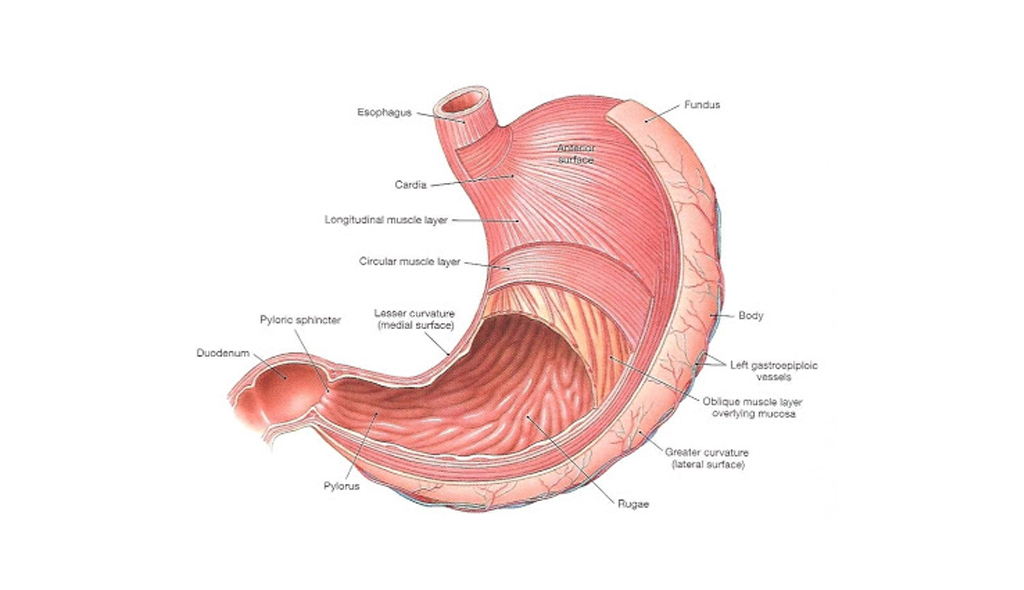
Your stomach functions as a container since it holds the food particles until those are mixed with the enzymes. Alongside functioning as a container, this sac-like organ also acts as a mixer and grinder. This hollow, muscular organ has a capacity of around one liter.
Your stomach secretes acid and other strong enzymes that further break down the food particles. These acid and enzymes are secreted by the cells in the lining of your stomach. When the food leaves the stomach, it turns into a thick liquid or paste form. The food then enters your small intestine.
Small Intestine
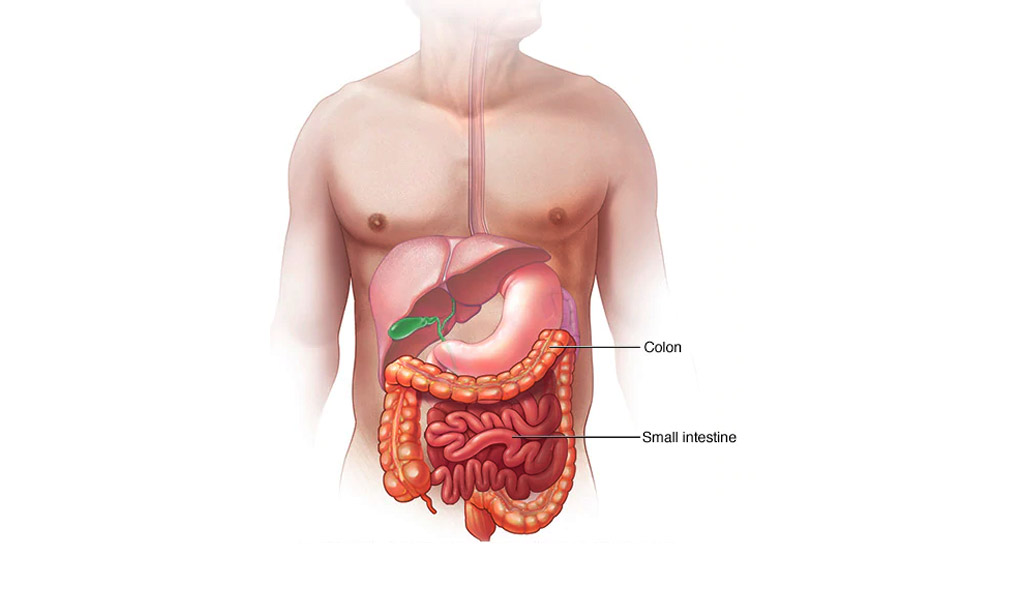
In sharp contrast to its name, the small intestine is very large, measuring around 20 feet, when spread out. But since this long tube is coiled up in your abdomen, it seems small.
It is comprised of three segments – the duodenum, the jejunum, and the ileum. While the duodenum is tasked with breaking down the food, the jejunum and ileum help absorb nutrients to your bloodstream.
The food, which enters in a thick liquid or paste form, ends up in liquid form after going through the small intestine. The density of the food is changed with the help of enzymes, water, mucous, and bile.
Pancreas
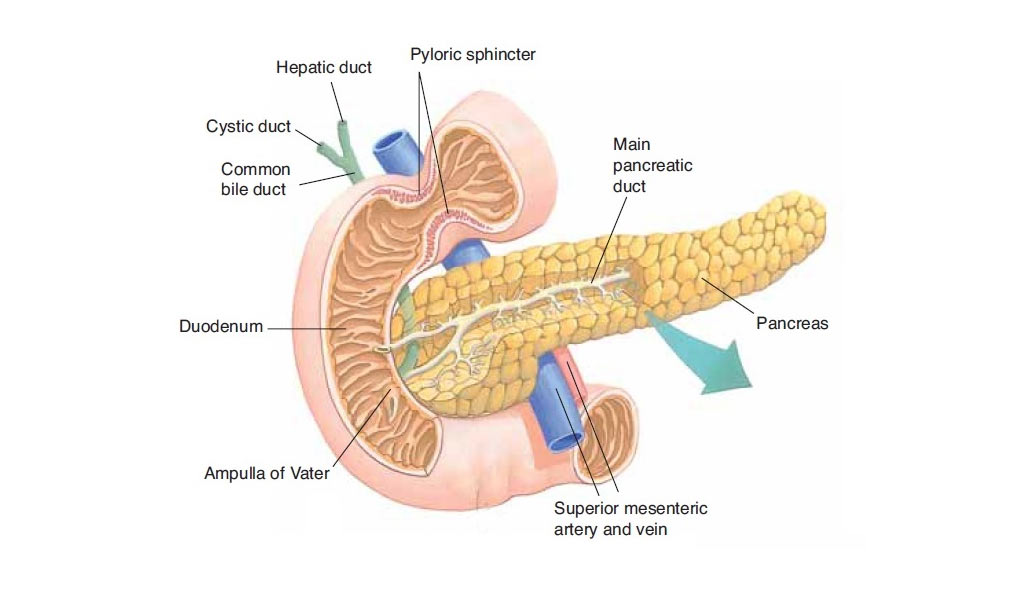
The pancreas helps in accelerating the digestive process. Your small intestine uses enzymes, released by your pancreas to breakdown carbohydrates, protein, and fat from the food particles. Pancreas also produces insulin that is directly secreted to your bloodstream. This insulin is the primary hormone that is used for metabolizing sugar.
Liver
The liver plays a couple of highly underrated functions in the digestion process. Most importantly, it processes the nutrients absorbed from your small intestine. Your liver also produces bile, which is secreted to your small intestine. This bile helps in digesting fat.
Known as the chemical factory of the body, the liver produces different types of chemicals from the raw materials absorbed by the intestine. These chemicals are responsible for the proper functioning of the body. The liver also breaks down drugs and detoxifies harmful chemicals.
Gall Bladder

At first glance, it may seem that the gall bladder hardly has any function in the human digestive system. But, it should be noted that no matter how big or small of a role any of the organs mentioned in this list performs, the smooth functioning of the overall human digestive system is dependent on the contribution from every one of them. The gall bladder is no exception.
Bile is stored and concentrated by your gall bladder, which is then released to the duodenum for absorbing and digesting fats.
Large Intestine (Colon)

Your large intestine, also known as the colon, helps connect your small intestine to your rectum. Measuring 6 feet in length, this long muscular tube is also coiled up and is made of:
- Cecum
- Ascending colon/Right colon
- Transverse colon
- Descending colon/Left colon
- Sigmoid colon
The cecum has a small tube attached to it, known as the appendix. The large intestine plays an important role in your bowel movement since it processes the waste materials.
Following the digestion of the food, the waste materials left in the process are transformed from a liquid state to a solid-state. Through peristalsis, they are passed through the colon. When the stool goes through the colon, the water is removed from it. It stays in the colon and when the colon is filled, it is then emptied to the rectum.
The stool is made of bacteria and food debris. These bacteria help in processing food particles and waste products, synthesizing vitamins, and in fighting off harmful bacteria.
Rectum
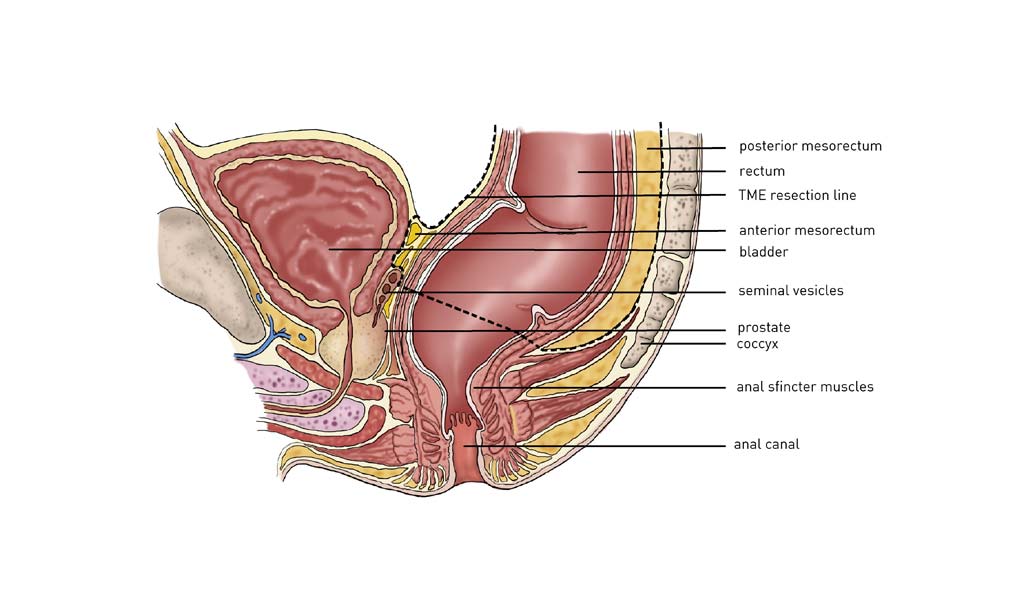
Rectum connects the colon to the anus. This 8” chamber receives stool from the colon and holds it until you eliminate it from your body. When the stool reaches the rectum, your brain gets a message from various sensors. Your brain, then, decides the releasing time of the rectal content. At the time of the release, the rectum contracts and the sphincters relax, thereby effectively disposing of the content.
If you decide not to release the content, then your rectum simply accommodates and your sphincter contracts to remove the temporary sensation.
Anus
The final part of the human digestive tract is the anus. Comprising of two anal sphincters (internal and external) and pelvic floor muscles, your anus is a 2” long canal.
Rectal content is detected by the lining of the upper anus. It notifies you as to whether the content is in liquid form or solid form or gaseous form. The involuntary release of stool is controlled by the pelvic floor muscles.
The internal sphincter stays tight, except when the stool reaches the rectum. The external sphincter, on the other hand, holds the stool until we are completely ready to start the excretion process.
What Happens to Digested Food?
Once your small intestine absorbs the nutrient from the food, it is passed to the other parts of your body through your circulatory system. It is then put to your bloodstream. Sugar, vitamins, salts glycerol, and amino acids are then carried to the liver by your blood. The liver helps in storing, processing, and delivering the nutrients to the rest of your body.
To Conclude
The human digestive system is an inter-connected network that relies on the systematic functioning of different types of organs to operate the digestion process. A failure in any of the organs mentioned above can seriously affect the digestion, making us fall sick. So, taking care of the body is crucial. From proper chewing of the food, drinking adequate water, eating healthy, to study in a pollution-free environment, everything plays an important role in easy digestion.
If you want to know more about Digestive System or any topic of Biology, you can enroll for our Online Demo Class.

